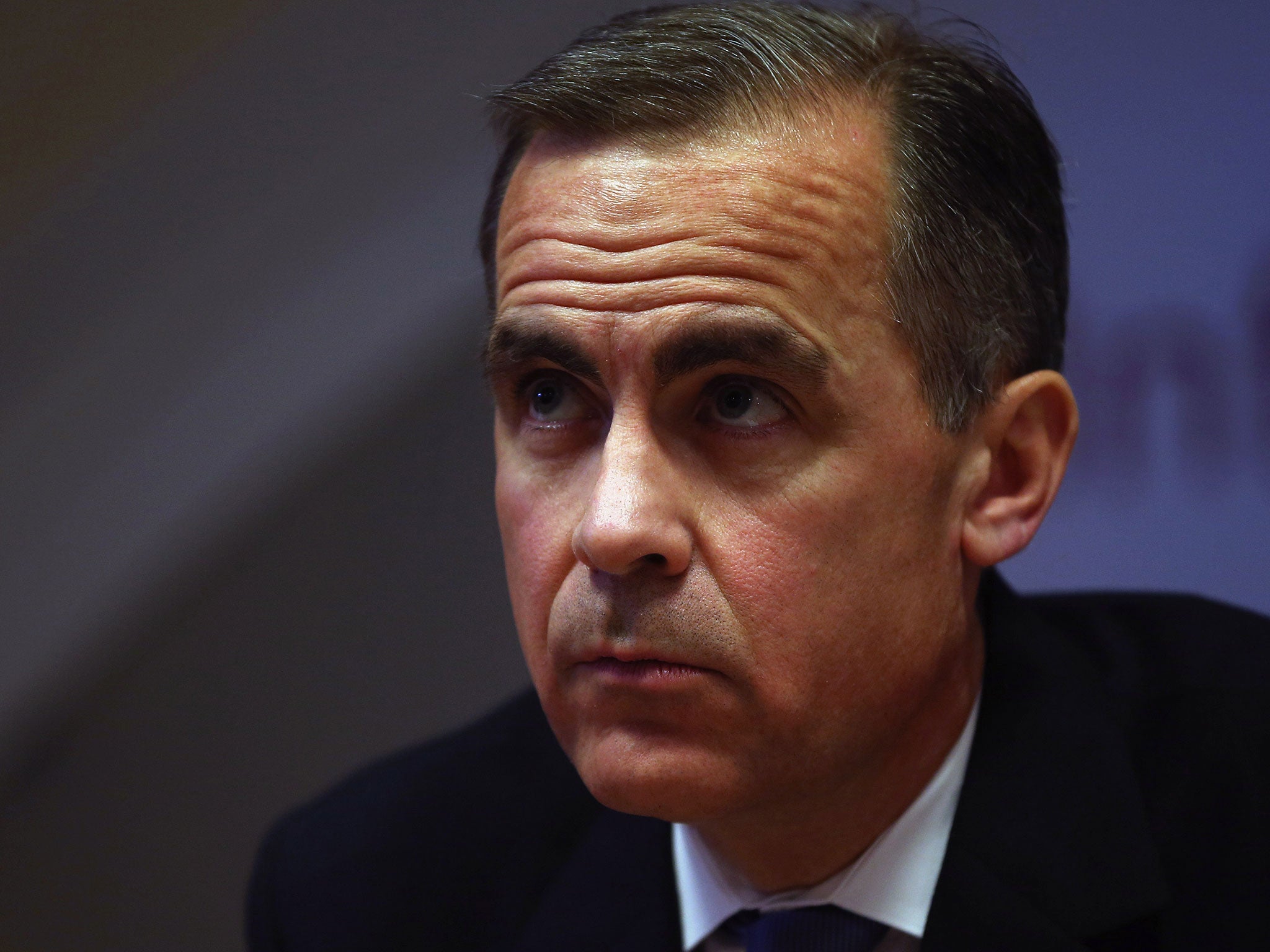The Bank of England will soon have to write its first ever letter to the Chancellor to explain why inflation has fallen so low, Threadneedle Street said yesterday.
If inflation moves away from the Bank’s 2 per cent target by more than 1 percentage point in either direction, the Bank is required by law to send an open letter to the Treasury.
In its latest Inflation Report the Bank projects consumer price inflation dipping to around 1 per cent in December, from its present level of 1.2 per cent, and remaining there throughout the first half of next year.
Officials at Threadneedle Street said this raises the chances inflation will slip below the 1 per cent threshold at some point, automatically triggering a letter.
“It is more likely than not that I will have to write an open letter to the Chancellor in the next six months on account of the inflation rate falling below 1 per cent” the Governor Mark Carney said yesterday.
The Bank has had to send numerous open letters to the Treasury since 2007 to explain why inflation has been above 3 per cent on account of unexpected shocks from high global energy prices. But this would be the first time since the Bank has been targeting CPI than it has been forced to explain why inflation has undershot on the downside.
During the Great Recession consumer price inflation plummeted but never went below 1 per cent. The lowest level was 1.1 per cent, reached in September 2009.
The Bank said the significant downward revisions to its inflation outlook over the coming months reflected falling prices of food, imported goods and energy.
The Bank slashed its estimate of the oil price in 2015 to $89.25, down from the $107.25 it expected in August. Supermarkets are also engaged in a price war and the appreciation of the pound since last year has pushed down import prices.
Mr Carney said that the “spectre of economic stagnation” in Europe was creating a headwind for the British economy as it reduced its forecasts for business investment slightly.
However, the Governor added that much of this drag would be moderated by UK interest rates staying lower for longer than expected, with markets now not pricing in a hike until next autumn. In August markets expected the first rate hike to come as soon as February 2015.
The Bank trimmed its GDP growth forecast for next year from 3 per cent to 2.9 per cent. But it still expects growth this year to be a healthy 3.5 per cent. “The UK can continue to grow at above-trend rates in the face of subdued world demand” said Mr Carney.
The City interpreted the Inflation Report as highly dovish, sending sterling down by around 0.85 per cent to $1.5817 after its release. “The Bank appear to remain reasonably upbeat on the UK’s prospects, but are in no hurry to raise rates” said James Knightley of ING.
Unemployment fell by a further 115,000 in the quarter to September, the Office for National Statistics reported yesterday. But the Bank said the “best collective judgement” of the Bank’s Monetary Policy Committee was that the level of slack in the labour market was still 1 per cent of GDP, unchanged from August.
It explained that the level of spare capacity had not changed, despite further falls in unemployment, because the workforce participation rate had fallen, indicating more slack in the labour market than it previously estimated. Unemployment is expected by the Bank to continue falling from its present 6 per cent rate, levelling out at 5.2 per cent in 2017, alongside a pick-up in productivity.
Mr Carney said at the press conference that real increases in pay for British workers, after years of declines, are in prospect, as official figures showed one measure of average wages rising above the rate of inflation in September for the first time in five years. Average earnings, excluding bonuses, were up 1.3 per cent year-on-year in the three months to September according to the ONS.
However, the Bank’s estimates of average nominal wage growth were actually unchanged in 2014 and 2015 from August at 1.25 per cent and 3.25 per cent respectively. In 2016, however, the Bank reduced its forecast for nominal pay growth from 4 per cent in August to 3.75 per cent.
Despite the new fall in joblessness, the official unemployment rate remained at 6 per cent, belying City analysts’ expectations of a decline to 5.9 per cent. The number of dole claimants fell by 20,400 to 931,700, slightly lower than analysts’ expectations of a 22,000 decline. Total pay, a measure that includes bonuses, in the quarter to September was up by 1 per cent.
Subscribe to Independent Premium to bookmark this article
Want to bookmark your favourite articles and stories to read or reference later? Start your Independent Premium subscription today.


Join our commenting forum
Join thought-provoking conversations, follow other Independent readers and see their replies